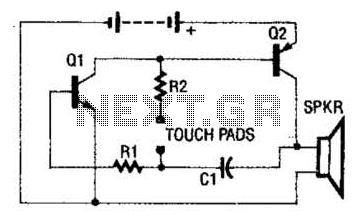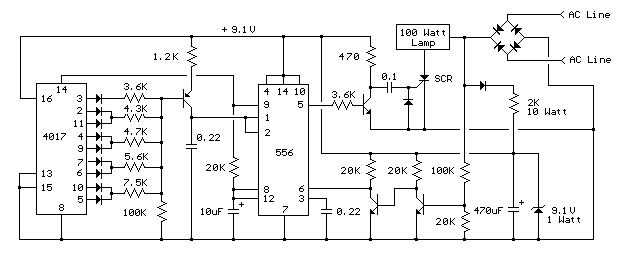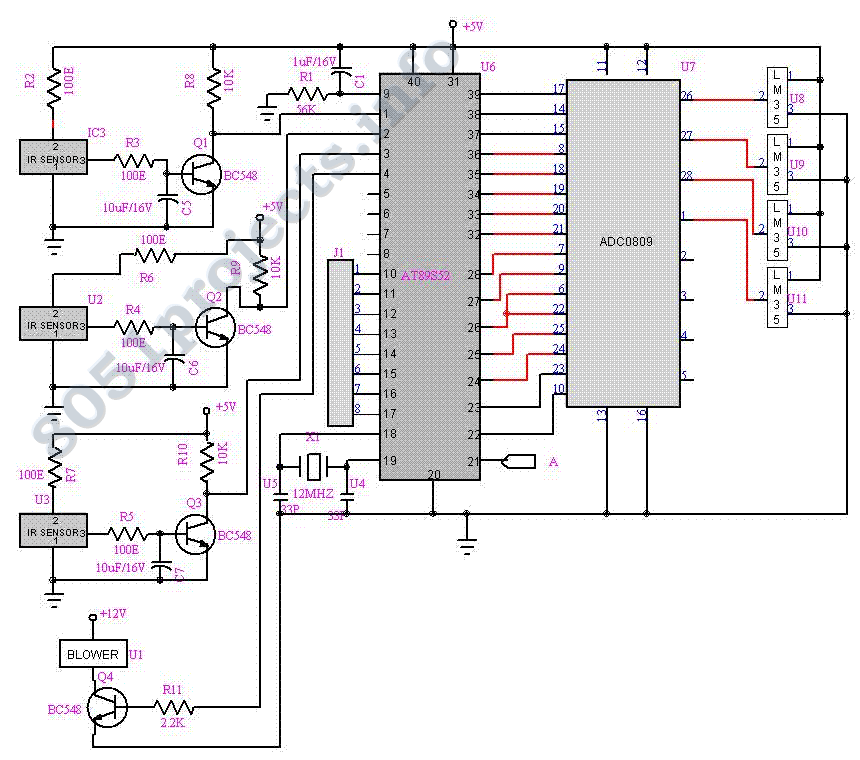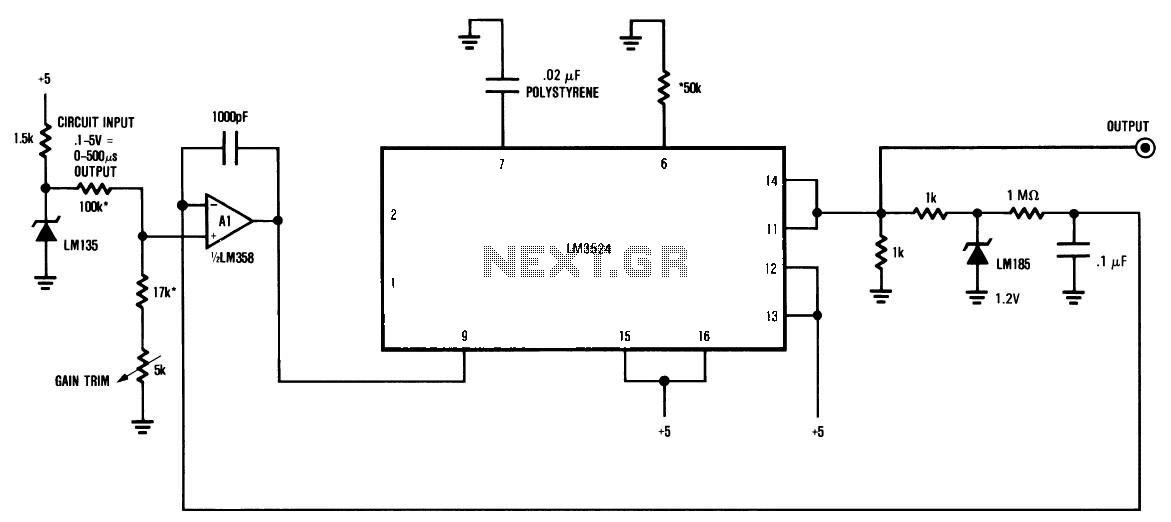
Simple Lie Detector Circuit

The circuit employs a two-transistor direct-coupled oscillator, with its frequency determined by capacitor C1, resistor R2, and the skin resistance across the touch pads. Since C1 and R2 are fixed values, only the skin resistance can vary the sound produced by the oscillator. To maintain oscillations, C1 provides feedback from the output of transistor Q2 to the input of transistor Q1 through resistor R1. Transistor Q1 is an NPN type, while transistor Q2 is a PNP type. The output from Q2 is connected to a small speaker. The operation of the circuit is based on the conductive properties of human skin.
The described circuit is a simple yet effective example of a touch-sensitive oscillator. The two-transistor configuration allows for direct coupling, which is essential for sustaining oscillations. The choice of using an NPN transistor (Q1) and a PNP transistor (Q2) creates a complementary pair that enhances the circuit's performance and stability.
The frequency of oscillation can be adjusted by varying the skin resistance, which is influenced by the conductivity of the touch pads. This feature makes the circuit highly interactive, as different levels of touch can produce a range of sounds. The feedback loop established by capacitor C1 and resistor R1 is crucial; it ensures that a portion of the output from Q2 is fed back to Q1, thus sustaining the oscillation.
The output signal from Q2 is then used to drive a small speaker, converting the electrical oscillations into audible sound. The speaker's performance is dependent on the output characteristics of Q2, which must be capable of delivering sufficient power to produce sound at a desirable volume.
This circuit can serve various applications, including simple sound generation for toys, alarms, or educational projects demonstrating the principles of electronics and sound synthesis. Its reliance on the human body's conductivity introduces an element of interactivity, making it an engaging project for both beginners and experienced electronics enthusiasts. Overall, the two-transistor direct-coupled oscillator circuit exemplifies fundamental electronic principles while offering a practical application in sound generation. The circuit, uses a two-transistor direct-coupled oscillator that has a frequency determined by CI, R2, and the (skin) resistance across the touch pads. Since CI and R2 are fixed values, only the skin resistance across the touch pads can vary the sound of the oscillator.
To sustain oscillations, CI feeds a portion of the output from Q2 back to the input of Q1 through resistor Rl. Transistor Q1 is an npn type and transistor Q2 is a pnp type. The output of Q2 is fed into a small speaker. The circuit relies on the fact that the human skin conducts electricity.
The described circuit is a simple yet effective example of a touch-sensitive oscillator. The two-transistor configuration allows for direct coupling, which is essential for sustaining oscillations. The choice of using an NPN transistor (Q1) and a PNP transistor (Q2) creates a complementary pair that enhances the circuit's performance and stability.
The frequency of oscillation can be adjusted by varying the skin resistance, which is influenced by the conductivity of the touch pads. This feature makes the circuit highly interactive, as different levels of touch can produce a range of sounds. The feedback loop established by capacitor C1 and resistor R1 is crucial; it ensures that a portion of the output from Q2 is fed back to Q1, thus sustaining the oscillation.
The output signal from Q2 is then used to drive a small speaker, converting the electrical oscillations into audible sound. The speaker's performance is dependent on the output characteristics of Q2, which must be capable of delivering sufficient power to produce sound at a desirable volume.
This circuit can serve various applications, including simple sound generation for toys, alarms, or educational projects demonstrating the principles of electronics and sound synthesis. Its reliance on the human body's conductivity introduces an element of interactivity, making it an engaging project for both beginners and experienced electronics enthusiasts. Overall, the two-transistor direct-coupled oscillator circuit exemplifies fundamental electronic principles while offering a practical application in sound generation. The circuit, uses a two-transistor direct-coupled oscillator that has a frequency determined by CI, R2, and the (skin) resistance across the touch pads. Since CI and R2 are fixed values, only the skin resistance across the touch pads can vary the sound of the oscillator.
To sustain oscillations, CI feeds a portion of the output from Q2 back to the input of Q1 through resistor Rl. Transistor Q1 is an npn type and transistor Q2 is a pnp type. The output of Q2 is fed into a small speaker. The circuit relies on the fact that the human skin conducts electricity.





